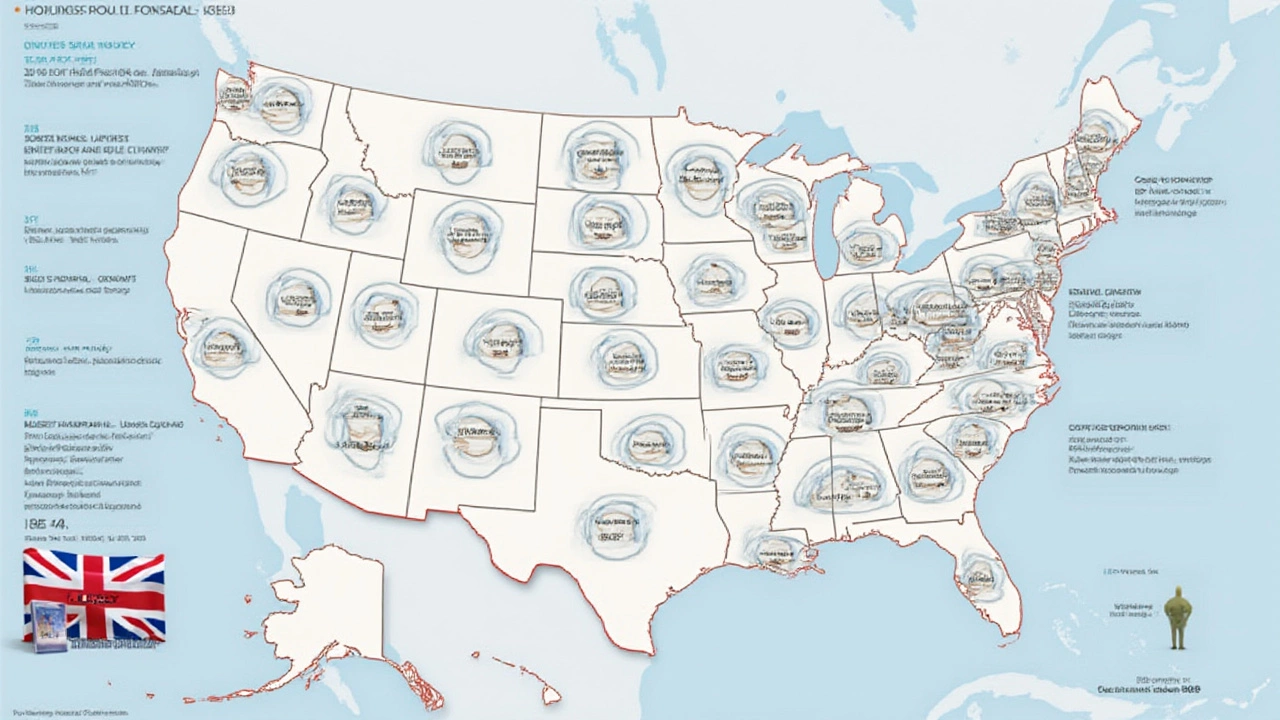Travel ID USA: How to Get Your US Travel Identification Fast
Need a reliable ID for road trips, plane rides, or just everyday life in the United States? A Travel ID—whether it’s a state driver’s license, a Real ID, or a non‑driver identification card—covers all those bases. Below you’ll find a straight‑forward plan that gets you the right card without extra hassle.
What Counts as a Travel ID in the US?
In America the term “Travel ID” usually refers to any government‑issued photo ID that the Transportation Security Administration (TSA) accepts at airport security. That means a standard state driver’s license, a Real ID‑compliant license, or a state‑issued non‑driver ID. Each serves the same purpose: proving who you are when you board a plane, rent a car, or check into a hotel.
Step‑by‑Step: Getting Your US Travel ID
1. Choose the right card. If you drive, the easiest route is a driver’s license. If you don’t, most states issue a non‑driver ID that looks just like a license and works for travel.
2. Gather the paperwork. You’ll need:
- A proof‑of‑identity document (birth certificate, U.S. passport, or permanent resident card).
- A proof‑of‑Social‑Security number (Social Security card, pay stub, or tax form).
- Two proofs of residency (utility bill, lease agreement, or bank statement dated within the last 60 days).
Having all three categories ready speeds up the appointment.
3. Decide on Real ID. Starting May 2025, every airline and federal building will require a Real ID‑compliant card for boarding domestic flights. It costs a little extra (usually $5‑$15) and adds an extra verification step, but the peace of mind is worth it.
4. Book an appointment. Most DMV offices now use online scheduling. Pick a nearby location, choose a time slot, and pay the fee online if possible. This reduces waiting time at the office.
5. Visit the DMV. Bring your documents, a form of payment, and a smile. The clerk will scan your IDs, take a photo, and may ask a quick verification question. Within a few weeks (or sometimes the same day) you’ll receive your new card.
6. Activate your card (if needed). Some states require you to sign the back or activate online before use. Follow the instructions on the card’s envelope.
Tips to Avoid Common Roadblocks
Missing a document is the most common reason people need a second trip to the DMV. Double‑check the state’s website for exact document names; a utility bill with a different name won’t count.
If you’re renewing an expired license, you might skip the Real ID check. But remember, without a Real ID you’ll need a passport for domestic flights after May 2025.
For non‑citizens, a state‑issued ID is still an option if you have a valid visa and proof of residence. Some states also accept an I‑94 form as proof of lawful presence.
Cost Overview
Fees vary by state, but expect:
- Standard driver’s license: $20‑$40.
- Non‑driver ID: $10‑$25.
- Real ID upgrade: extra $5‑$15.
Many states offer discounted rates for seniors, military members, and students. Check your local DMV’s fee schedule for exact numbers.
Now you’ve got the full roadmap to a US Travel ID. Gather the docs, book the appointment, and you’ll be road‑ready and flight‑ready in no time. Safe travels!
- July 8 2025
- 0 Comments
- Rowan Cavendish
Which States Issue REAL ID: Full Guide for 2025 Travelers
Curious about which states issue a REAL ID in 2025? This deep dive covers every state, how to get a REAL ID, and why they matter for travel and security.
- Driving Lessons (41)
- HGV Training (31)
- Driving Test Tips (31)
- Driving Test Booking (26)
- Driving Licence Renewal (23)
- Driving Theory Test (21)
- Pass Plus Course (15)
- Driving Tips (15)
- Intensive Driving Course (15)
- Driver Licensing (14)
Categories
- December 2025 (12)
- November 2025 (13)
- October 2025 (21)
- September 2025 (5)
- August 2025 (8)
- July 2025 (30)
- June 2025 (30)
- May 2025 (30)
- April 2025 (31)
- March 2025 (30)
- February 2025 (28)
- January 2025 (34)
Archives
- driving lessons
- driving test
- driving tips
- intensive driving course
- driving test tips
- HGV training
- learn to drive
- driving theory test
- driver training
- driving test booking
- pass driving test
- HGV driving
- road safety
- driving license renewal
- Virginia driving test
- learner drivers
- safe driving
- Virginia driver's license
- driving license
- learning to drive

